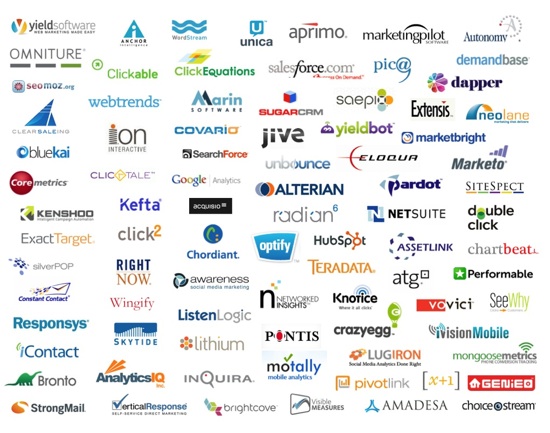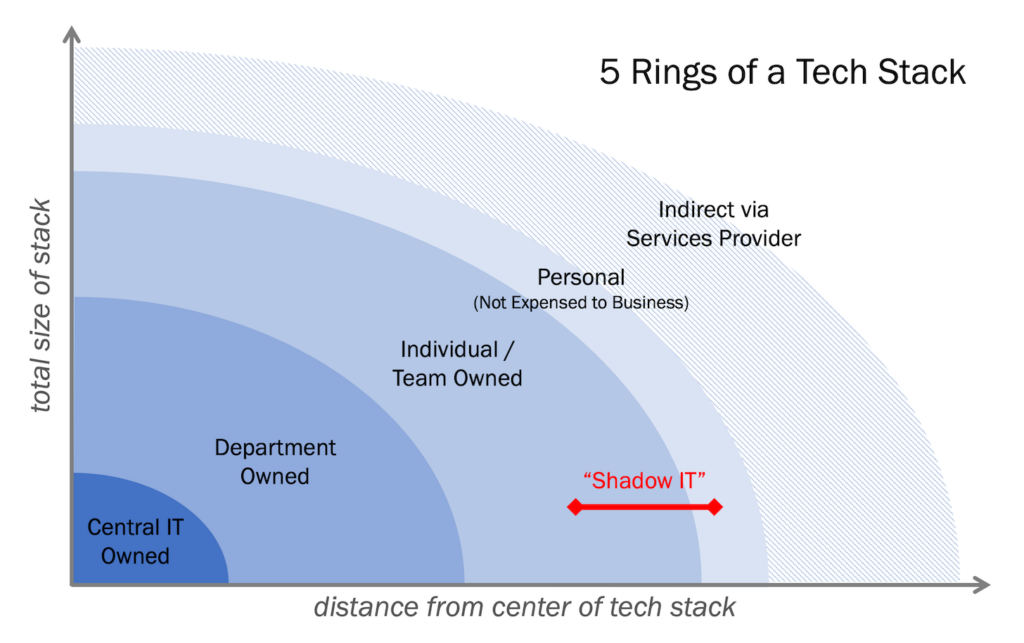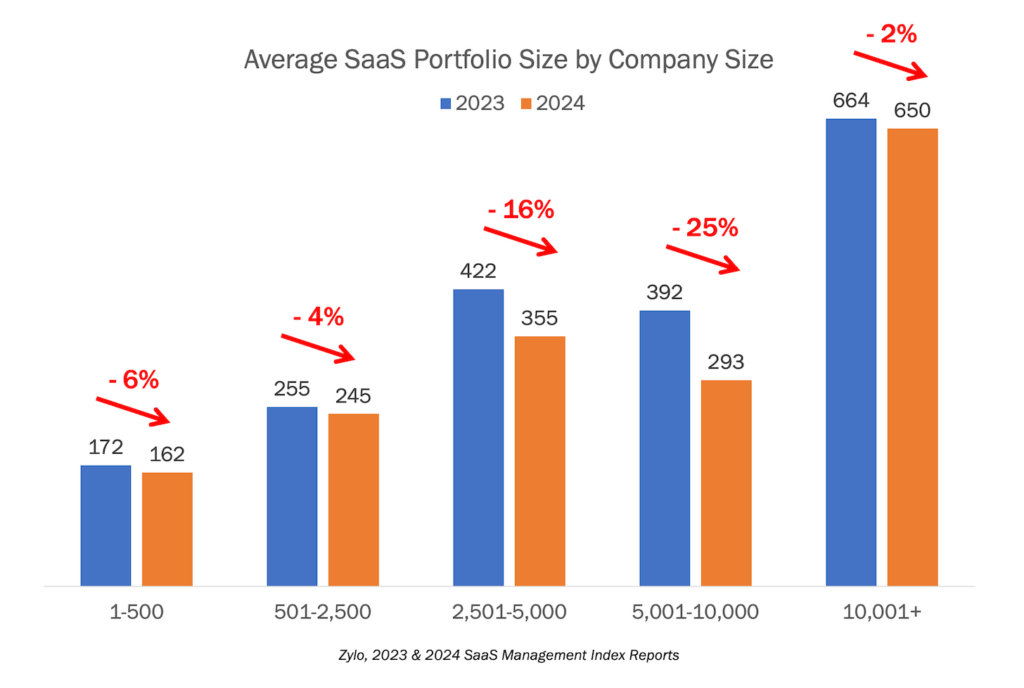To say that there are a lot of marketing technology companies out there is a major understatement. To help picture the scale of this expanding universe, here’s just a sample of the players in the field:
These are merely a fraction of the firms offering marketing automation, web analytics, campaign management, conversion optimization, email marketing, bid management, keyword research, attribution management, behavioral targeting, digital asset management, marketing resource management, social media monitoring — and I’ve left out numerous categories.
And more are on the way.
It makes you appreciate the spectacular sea change that is occurring in marketing. The forces that are driving this Renaissance of innovation and entrepreneurship in marketing technology are the same forces upheaving individual marketing departments and agencies.
1. Marketing spend. Marketing and advertising spend in the U.S. for 2010 is expected to be about $368 billion — but for the first time, online and digital strategies will get more money ($119.6 billion) than print media ($111.5 billion). This worldwide migration of old media dollars into digital initiatives represents a huge market and transfer of wealth.
2. Cloud computing. With SaaS offerings, marketers can adopt new marketing technologies without having to invest in huge capital expenditures or lengthy (and risky!) on-site IT integration. This dramatically reduces the hurdles to buying — and selling — new solutions.
3. Trackable medium. The tremendous transparency and accountability facilitated by digital channels makes value propositions relatively easy to quantify and measure. The net effect is to make it easier to justify purchases that can deliver results.
4. Disruptive innovation. In a mature market — say, relational database software — it’s harder for new entrants to elbow their way in among the established giants. But in a greenfield market such as marketing software, all of the players are effectively new entrants. This lowers the barriers to entry.
5. Software economics. Generally, it’s a relatively low-cost proposition to experiment with the seeds of new software development. Quickly build a prototype, try it out, and if it works, incrementally build from there. And if it really takes off, the economics of scaling a fixed-cost development are attractive. This too lowers the barriers to entry.
Collectively, these factors create an immensely fertile environment for new ventures in marketing technology.
The result is predictable: there’s going to be a lot more marketing technology flooding the market in the years ahead.
How can marketers, executives, and agency leaders make sense of it all? Now might be the time to consider establishing a chief marketing technologist role — essentially a marketing CTO — as part of your marketing leadership team.
Because when it comes to deciding which of these products to buy, how to configure them optimally for your mission, how to connect the dots between them as part of your unique marketing strategy, and how to extend them with your own proprietary seasoning — you don’t want to leave your fate in the hands of the IT department.
Leveraging this incredible field of marketing technology is ultimately a marketing mission, not an IT mission.





Fantastic post Scott. There really does feel like a shift is happening – this year in particular.
Your insight about the Chief Marketing Technologist is bang on. Technology doesn’t have to reside only within IT and I think the more empowered marketing departments become the happier everyone will be.
Thanks for including Unbounce in the logo diagram – it’s becoming quite the SaaS family.
Thanks, Oli! It is a terrific moment in time.
I probably inadvertently weighted the sample of logos with more conversion optimization and landing page optimization companies, simply because that’s what I know and love best. But they are great examples of the power of this shift. Kudos to you and your team!
In my discussions with fellow marketers, there’s a palpable sense of optimism in the industry right now. We absolutely feel change is underway, and this post really lays the groundwork for ongoing discussions on this topic. I like to say, “it’s marketers’ turn to be selfish.” And I truly believe it. For way too long, we’ve relied on tools that were built for sales, or had to be managed by IT. With all the choices for marketing automation tools today, and available proof that automation technology has a quantifiable impact on the sales cycle, there is a real shift in power happening. Perhaps the marketing CTO is the right person to lead the charge, but all marketers should feel empowered by the potential impact they can have on their organization beyond branding and loyalty – to revenue and profit.
Hi, Kristin — thanks for the inspiring comment! It’s great to hear confirmation of this shift (and palpable optimism) from across the industry.
I don’t necessarily think that a marketing CTO needs to lead the charge per se — I tend to visualize that role as simply a collaborative member of the new marketing team. The important emphasis being on “marketing team” — where overall, the goal is exactly as you describe it: to empower them as active players in the mission for revenue and profit.
Scott,
great post, and I couldn’t agree more. To extend points 4 and 5 a little bit, there is also such a wealth of disruptive innovations with good software economics *near* the marketing space (ie, the iPhone, etc) that allow marketing to be rethought in new and interesting ways in relation to those innovations.
Steve
Thanks, Steve.
You make an excellent point. The technologies I highlighted are mostly software solutions that marketers buy, configure, and use… but there’s an even broader category of “marketing technology” out there: platforms on which marketers create their own technology.
The iPhone is a terrific example. Web applications, Facebook apps, interactive advertisements, semantic web, Android, iPad — these are mediums that marketers can use to build experiences for their audience.
The nexus between the cornucopia of marketing software that you can buy and the essentially unlimited digital canvas on which you can build custom brand experiences is where things get truly exciting.
In many ways, digital marketing technology is starting to look a whole lot more like product development than IT.